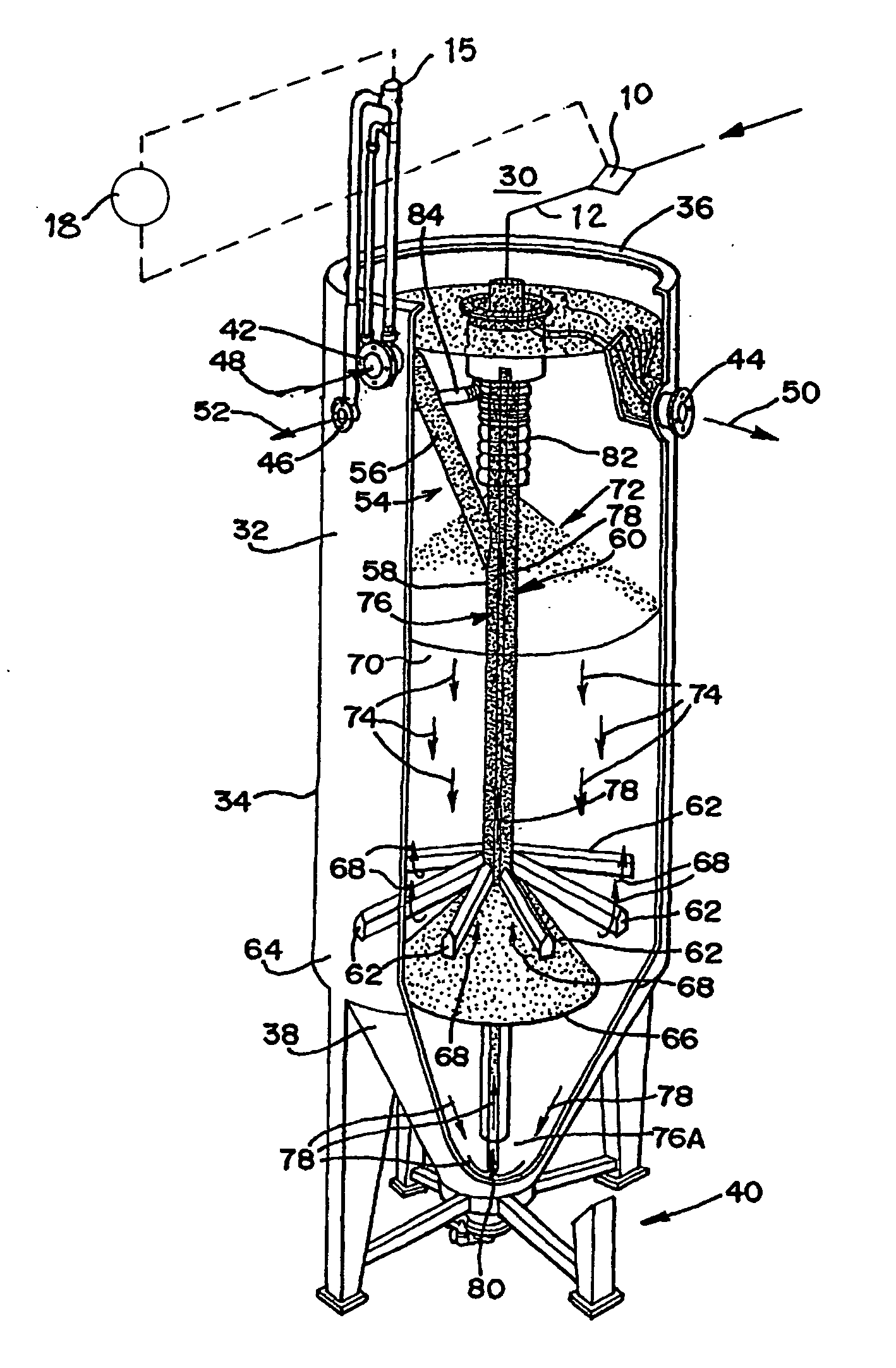Automated water treatment system and method of use
a technology of automatic water treatment and automatic discharge, applied in the direction of filtration separation, moving filter element filter, separation process, etc., can solve the problems of large area required for long time that water needs to remain in flocculation tanks and sedimentation basins, and high water purity for many applications
- Summary
- Abstract
- Description
- Claims
- Application Information
AI Technical Summary
Benefits of technology
Problems solved by technology
Method used
Image
Examples
Embodiment Construction
[0028] The above described drawing figures illustrate the invention in at least one of its preferred embodiments, which is further defined in detail in the following description. Those having ordinary skill in the art may be able to make alterations and modifications in the present invention without departing from its spirit and scope. Therefore, it must be understood that the illustrated embodiments have been set forth only for the purposes of example and that they should not be taken as limiting the invention as defined in the following.
[0029] In the present invention, illustrated in FIG. 1, the sand filter 30 includes an outer housing or tank 32 having an outer, generally cylindrically shaped wall 34 extending from a top end 36 to a funnel-shaped bottom portion 38. The tank 32 is supported by a stand assembly 40 so that the tank 32 can be disposed in a vertical orientation with the stand assembly 40 extending downward from the outer wall 34 and around the funnel-shaped bottom po...
PUM
| Property | Measurement | Unit |
|---|---|---|
| pressure | aaaaa | aaaaa |
| size | aaaaa | aaaaa |
| turbidity | aaaaa | aaaaa |
Abstract
Description
Claims
Application Information
 Login to View More
Login to View More - R&D
- Intellectual Property
- Life Sciences
- Materials
- Tech Scout
- Unparalleled Data Quality
- Higher Quality Content
- 60% Fewer Hallucinations
Browse by: Latest US Patents, China's latest patents, Technical Efficacy Thesaurus, Application Domain, Technology Topic, Popular Technical Reports.
© 2025 PatSnap. All rights reserved.Legal|Privacy policy|Modern Slavery Act Transparency Statement|Sitemap|About US| Contact US: help@patsnap.com


